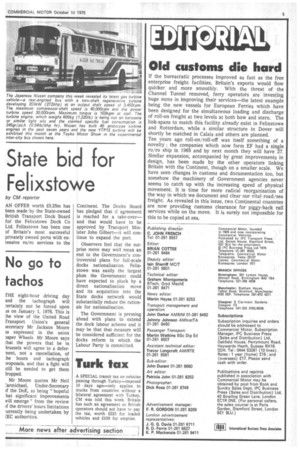Old customs die hard
Page 7

If you've noticed an error in this article please click here to report it so we can fix it.
If the bureacratic processes improved as fast as the free enterprise freight facilities, Britain's exports would flow quicker and more smoothly. With the threat of the Channel Tunnel removed, ferry operators are investing huge sums in improving their services—the latest example being the new vessels for European Ferries which have been designed for the simultaneous loading and discharge of roll-on freight at two levels at both bow and stern. The link-spans to match this facility already exist in Felixstowe and Rotterdam, while a similar structure in Dover will shortly be matched in Calais and others are planned.
Ten years ago roll-on/roll-off was itself something of a novelty ; the companies which now form EF had a single ro/ro ship in 1965 and by next month they will have 27. Similar expansion, accompanied by great improvements in design, has been made by the other operators linking Britain with the Continent, though on a smaller scale. We have seen changes in customs and documentation too, but somehow the machinery of Government agencies never seems to catch up with the increasing speed of physical movement. It is time for more radical reorganisation of the way in which we document and clear our vital road/sea freight. As revealed in this issue, two Continental countries are now providing customs clearance for piggy-back rail services while on the move. It is surely not impossible for this to be copied at sea.




































































































































